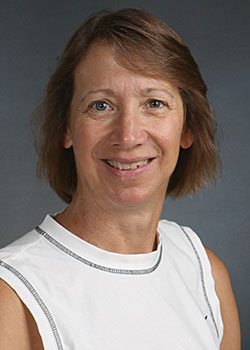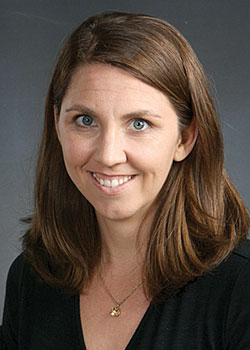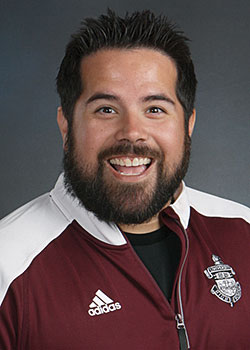Community reacts: Lab’s sexual education must evolve to match student realities
November 15, 2018
Most U-High students have undergone a traditional sex-ed sequence beginning in 5th grade that some feel inconsistently prepares students for sexually active or non-heterosexual adulthood.
However, the school-wide health and sex-ed curriculum is trending towards building a basic informational foundation at a younger age, and providing more in-depth conversations around sex-ed topics as students grow.
Teachers have autonomy over sex-ed curriculum
Health classes, including sex-ed, were not a part of the U-High or middle school curriculum until 2010 after then-Director David Magill pushed to incorporate the classes into the curriculum.

Physical education teacher Diane Taylor was one of three teachers who piloted the health program in 2010 and helped create the initial lesson outline for the health curriculum. She is currently one of four teachers who teach high school health.
Ms. Taylor said that while the P.E. department chooses the broader categories that make up the sex-ed curriculum, presentation of those topics is largely at the discretion of each individual teacher.
“We’re supposed to cover contraception, STDs or STIs, and dating violence including date rape and sexual assault, and consent becomes a part of that conversation,” Ms. Taylor said. “I don’t know if we’ve ever said that consent is explicitly included, but I know we all teach it. I honestly don’t know how you could teach sex-ed without it.”
Ms. Taylor said that despite having a lot of autonomy over their health classes, the teachers are very collaborative.
“Sometimes we take the time to sit down as a group and brainstorm the different ways to present our topics,” she said. “For most of us, once we have a good video, we’ll forward it to everyone else in the department.”
Sex-ed is starting from grade 3 to be more comprehensive
According to Title IX/Wellness Coordinator Betsy Noel, the sex-ed curriculum is being expanded to include younger students, and more complex topics for older students. Ms. Noel also has a B.S. in nursing and is a registered nurse.

“It used to be that we only did puberty education in fifth grade, but we then walked it down to fourth, and now we’re walking it down to third grade, so we can make sure that students understand their bodies right out of the gate,” Ms. Noel said. “They’re also having gender identity conversations in some of the fifth grade classrooms this year, and hopefully we’ll be able to expand that to all of the fifth grade, because those identity conversations are really crucial.”
With new research from Yale University and the Lab Schools health and wellness survey conducted last spring, Ms. Noel said that the results offer an opportunity to re-evaluate the direction of the curriculum.
“Students [in the Yale survey] reported that they they got more than enough of the birds-and-the-bees part of sex-ed, but not enough information about how to create positive, healthy relationships. And that’s something I care a lot about, because what we’re ultimately aiming for is healthy relationships for everyone, not just STD avoidance or sexual assault prevention,” Ms. Noel said. “As part of the Lab’s response to the last year’s student Wellness survey, we’re trying to get a better sense from students what they think the priorities in sex-ed should be.”
Students expect informative, standardized syllabus
For freshman Natalie Holtquist, her journey through sex-ed at Lab hasn’t always been helpful or informative.
“A lot of the times, it seemed like a lot of the people teaching sex-ed were uncomfortable with the topics themselves, so they didn’t really go into the detail that was necessary to get anything out of the experience,” Natalie said. “But in other situations, there were people who were teaching where it seemed like they thought abstinence was key. ‘Abstinence is key’ is one way to teach sex ed, but they didn’t enforce the ideas that would help us avoid STIs and things like that, if someone were to have sex.”
Feminist Club leader Celia Garb said that while she feels that Lab’s sex-ed has been a positive experience for her, she’s concerned about the wide range of different sex-education courses students experience with different teachers.
“It should not be the case that depending on what teacher you get you are told different things about how to take care of your body. It’s weird that it is variable, and that not everyone is getting the same information,” Celia said. “It’s really important, because the paramount task of Lab is to prepare kids to be adults. If they don’t understand their bodies and how to take care of them and to appreciate them and love them, their job has not been done.”
Community wants change in heteronormative education
LGBTQ+ students recognize the limitations of health class, but still have some recommendations.
According to Zoe Dervin, vice president of Spectrum, even though more intimate discussions might not work in a class setting, health class still has a role to play.
Zoe said she appreciates how health classes normalize nonheterosexual relationships, but that it has room to grow with conversations about gender identity.
If people don’t know anything about transgender people, Zoe said, they’re more likely to make assumptions and believe stereotypes.
“The world is changing. To not change sex-ed would be rendering the class useless,” Zoe said. “You want to update the curriculum when you’re talking about people’s identities.”
Ms. Noel said she’s working on making the high school sex-ed curriculum more robust, like the middle school curriculum which includes discussions about relationships and gender identity.
Nikita Sekhar, a junior, said that there need to be such gender identity conversations in high school health classes.
“There should be conversations about how we identify and how those identities shape who we are,” Nikita said. “That’s important in health because a lot of people struggle with that, and a really important part of mental health is figuring out who you are and what your purpose is.”
Nikita also said the curriculum should include lessons on risks associated with anal sex, and that conversations about gender could start in health but don’t need to stop there.
“There needs to be a meeting with a bunch of teachers where it’s like ‘hey we need to create better conversations around gender pronouns and using them in school settings.’ I just don’t feel like it’s just the job of the P.E. department. So every teacher should do that,” Nikita said.
Luke Zavala, a P.E. and health teacher, said that in his sexual education classes, he makes it a point to emphasize relationships and consent.

“At least half of our female high school student population doesn’t necessarily prescribe to only male-female relationships,” Mr. Zavala said, referencing information from the wellness survey. “So I think that one thing that I always like to make sure people understand is that relationships look different for everybody, and there are certain things that make up a healthy relationship and an unhealthy relationships regardless of sexual orientation.”
In addition to traditional sex-ed topics like pregnancy taught in middle school science classes, advisory programming and high school health classes, Ms. Noel said she holds sessions on relationships and gender identity in the middle school.
“What we’re really looking to accomplish is a program that really follows students as they grow at Lab,” Ms. Noel said. “Now that more of our students aren’t new, and having started with that stronger foundation from lower school, we have a really good opportunity to carry forward that education into middle and high school.”




























































